|
|||||||||||||||||||||||||||||||||
|
|||||||||||||||||||||||||||||||||
[Paper: Defect-Free Carbon Nanotube Coils. Nitzan Shadmi, Anna Kremen, Yiftach Frenkel, Zachary J. Lapin, Leonardo D. Machado, Sergio B. Legoas, Ora Bitton, Katya Rechav, Ronit Popovitz-Biro, Douglas S. Galvão, Ado Jorio, Lukas Novotny, Beena Kalisky, and Ernesto Joselevich. Nano Lett., 2016, 16 (4), pp 2152–2158. DOI: 10.1021/acs.nanolett.5b03417]
Nanotubes that coil to the sound of music: tango or chorinho
Among the many applications foreseen for carbon nanotubes, there are some nanoelectronic devices that make use of the excellent ability to conduct electricity, through the tiny graphene tubes. For the good performance of nanotubes in some of these applications, the most suitable are the coil configurations, formed by a single nanotube with its two ends free to make contact with other components within a device. Additionally, to not lose conductivity, the nanotube coil should have relatively low density of structural defects.
In practice however, it is not easy for a human being to achieve 1 nm diameter tubes to twist into spiral loops without generating imperfections and leaving their tips separate from the bundle.
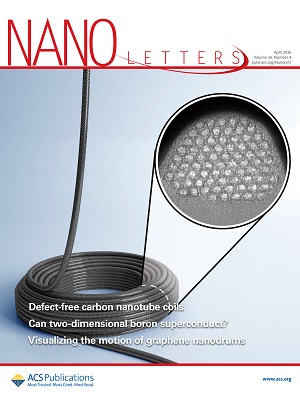
In an article published in the prestigious Nano Letters journal, highlighted in the cover of the April issue of this year, a team of 14 scientists reported the formation of defect-free nanotube coils with free ends, from a spontaneous coiling mechanism of single-wall carbon nanotubes. The study was led by researchers from the Weizmann Institute of Science (Israel) with the participation of four scientists from Brazilian universities (State University of Campinas, Unicamp; Federal University of Minas Gerais, UFMG, and Federal University of Roraima), from ETH Zürich (Switzerland) and from the Bar-Ilan University (Israel).
The team placed iron nanoparticles on silicon dioxide substrates and added a carbon-containing gas – a combination known to promote the growth of long single-wall nanotubes, which can reach more than 100 microns in height. The nanotubes grow perpendicular to the substrate like a forest of trees.
Under these conditions, the scientists created several carbon nanotubes samples, and some were spontaneously coil shaped. The authors analyzed the nanotube coils using SEM, TEM and AFM, obtaining information such as diameter, height and number of coil turns. Using the Raman spectroscopy technique, the authors continued investigating the nanotube coils and found a very low concentration of structural defects and also found that the diameter and chirality of the nanotubes were the same throughout the coil. The Raman spectroscopy analyses were partially carried out at the UFMG by Brazilian Professor Ado Jorio.
To understand the coil formation mechanism, the team used atomistic molecular dynamics simulations, used to depict the physical movements of atoms and molecules. These simulations were headed by Professor Douglas Soares Galvão (Institute of Physics Gleb Wataghin – Unicamp) and carried out by the postdoctoral researcher Leonardo Dantas Machado, former student of Galvão, and by Professor Sergio Benites Legoas (Federal University of Roraima), ex-postdoctoral grant holder in Galvão’s group. At IFGW – Unicamp, Prof. Galvão heads a research group specialized in simulation and computer modeling of nanostructured materials, particularly involving nanowires and nanotubes, and often collaborating with experimental groups from different countries. Through the simulations, the group is able to study, understand and predict phenomena that are sometimes not directly viewed or accessed experimentally in the time scale in which they occur.
Generally speaking, the simulations showed that after growing vertically, the nanotubes that had formed coils began to deposit on the substrate from the bottom up, forming the first turn as a result of their interaction with the carbon gas flow and with the substrate. After this first step, the nanotubes continued to spontaneously and steadily be deposited in a coil-like shape, completing up to 74 turns.
The team also investigated the performance of the coils as inductors (coiled devices that generate magnetic fields when an electrical current passes through, also known as electromagnetic coils) – a nanotube application that had not been studied until now. In the Nano Letters article the nanotube coils showed that despite being highly conductive, they are not yet ready to be used as efficient inductors. However, in the article the analysis of its electrical and magnetic behavior presented new and valuable information which can be used to develop inductive devices from nanotubes.
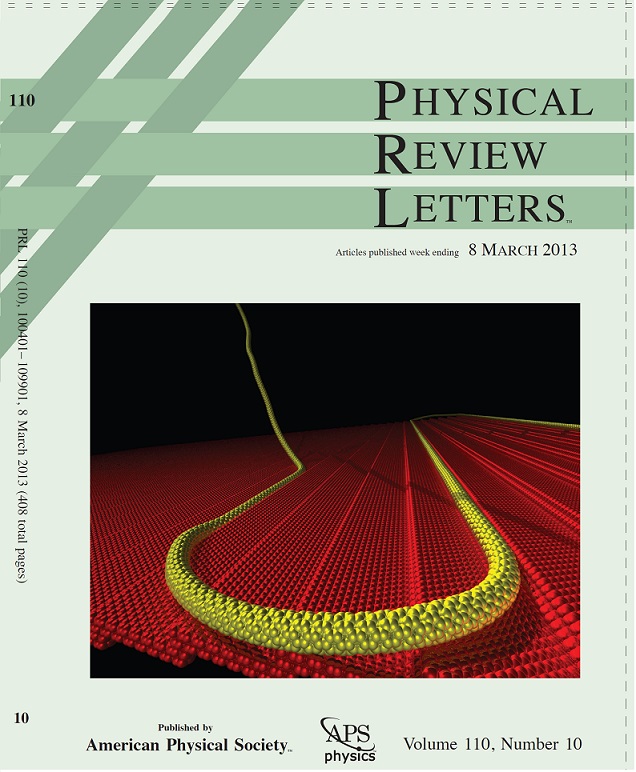
According to Professor Galvão, the paper published in Nano Letters is a continuation of a previous project on carbon nanotube serpentines that involved his group, the group of Israel, led by Ernesto Joselevich, and Professor Ado Jorio (UFMG). This first study also produced an article featured on the cover of a prestigious journal, the Physical Review Letters (Dynamics of the Formation of Carbon Nanotube Serpentines, L. D. Machado, S. B. Legoas, J. S. Soares, N. Shadmi, A. Jorio, E. Joselevich, and D. S. Galvão, Phys. Rev. Lett. 110, 105502 – Published 8 March 2013).
Galvão recounts that the collaboration between the Brazilians and the Israel group began at a conference in Spain, where he attended a presentation by Joselevich on serpentine-shaped carbon nanotubes. “I believed it was a very interesting problem”, says Galvão. Coincidentally, the two scientists met again in a Brazilian event of condensed matter physics and had lunch together with Ado Jorio. That is when their collaboration began. “From the point of view of simulation, it was a very challenging and difficult project (in addition to specifically developing new protocols for the problem, the simulations involve millions of atoms), but Leonardo and Legoas were able to solve this”, says Galvão.
In addition to being consistent from the scientific point of view, the simulations were interesting from an aesthetic point of view. In this regard, Professor Galvão shares an anecdote. “Joselevich, who is Argentine by birth, knows Brazil and the Brazilian culture quite well. The first time he saw the serpentine simulations, he remembered the melody of “Brasileirinho” (a famous piece of chorinho music). We prepared some video versions incorporating the Brasileirinho as the soundtrack in his honor, jesting with the Brazil-Argentina rivalry, and others with tangos. The Brasileirinho wins, of course”, says the professor jokingly.
Two videos of nanotube dancing and forming coils can be accessed free of charge in the supporting info published with the paper in Nano Letters: http://pubs.acs.org/doi/abs/10.1021/acs.nanolett.5b03417
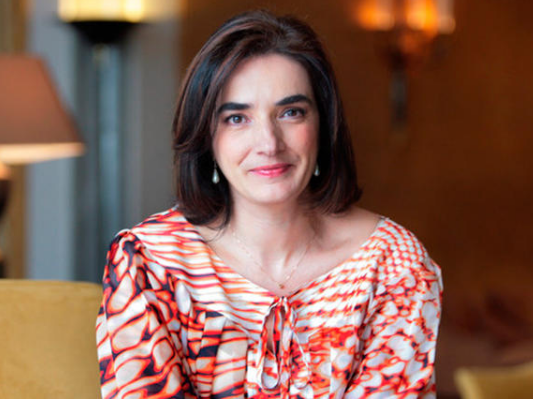
July 2008 was perhaps one of the most rewarding months in the professional career of the Portuguese scientist Elvira Fortunato, and also one of the busiest in media interviews. In fact, it was in July she learned she had won the competition of the European Research Council (ERC), winning EUR 2.25 million, the “Advanced Grant”, to conduct a project on transparent electronics. Titled “Invisible”, the project proposed the development of transparent transistors manufactured using metal oxides as semiconductor components, instead of the traditional silicon semiconductors. In addition to being transparent, these materials have an economic and ecological advantage, and improve the transistors performance.
July 2008 was also the month of extensive divulgation on the internet of a worldwide innovation developed under Elvira Fortunato’s leadership in the laboratory of Materials Research Center (CENIMAT), at the New University of Lisbon, located on the Caparica campus: the paper transistor. Fortunato and her team inserted the conductor and semiconductor components of the transistor on both sides of plain paper sheets (vegetable cellulose), using simple environmentally friendly manufacturing processes and carried out at ambient temperature. In addition to using paper as support, the Portuguese team broke new ground by giving this material an active role: to act as insulating component of the transistor. Different from traditional silicon based transistors, the paper based transistor of the Portuguese team is flexible, recyclable, made from renewable material and much cheaper. These features open up numerous application possibilities of “paper electronics” (a concept coined by Fortunato and registered by Paper-e®), from biosensors to smart packaging.
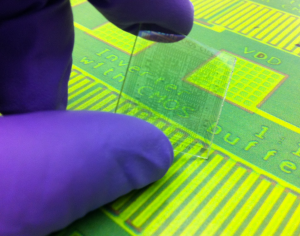
Elvira Fortunato’s attraction to science began in her childhood when she saw an onion cell under an optical microscope. Her passion for scientific research occurred in 1987 when Elvira, in her last year of the Engineering Physics and Materials course at the New University of Lisbon (UNL), had the opportunity to be part of the team at a microelectronic laboratory. Continuing her scientific training at UNL, Fortunato carried out research on amorphous silicon and obtained her master’s degree in semiconductor materials (1991) and a PhD in Materials Science specializing in microelectronics and optoelectronics (1995). In 1991 she began her teaching career at UNL. In 1998 she took over the directory of CENIMAT, a position she holds to this day. In 2012, she became Full Professor of the Department of Materials Science, Faculty of Science and Technology of the University. Since the end of 2015, together with six other European scientists from different fields, she is part of the first group of scientific advisors dedicated to strengthening the EU policies for scientific issues, the High Level Group of Scientific Advice Mechanism.
In nearly three decades of research, the materials scientist, whose H index is 54 according to Google Scholar, has about 500 published articles and more than 50 patents filed. Her scientific production includes more than 14,000 citations.
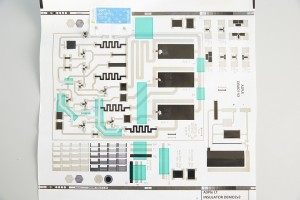
Elvira Fortunato has received dozens of awards from various entities; among them the “Grand Officer” of the Order of Infante D. Henrique, awarded by the President of the Republic of Portugal (2010). As for this year, the scientist has been honored with two major awards. Together with her husband, the scientist Rodrigo Martins, they are among the finalists for the European Inventor Award 2016, the European Patent Office, for the invention of the paper transistor. Moreover, the researcher was awarded by the European Academy of Sciences (EURASC) with the Blaise Pascal Medal for Materials Science 2016, which also makes her a fellow of this academy.
At the end of September, Elvira Fortunato will be in Brazil, in the city of Campinas (SP), giving a plenary lecture at the XV Brazil-MRS Meeting. The theme will be “green electronics”, a concept that covers the development of components and devices via environmentally friendly manufacturing processes, using materials such as cellulose produced by bacteria in addition to metal oxides, plain paper and nanostructured paper. Through a process of ingenuity, the speaker will show some of the many potential applications of these green devices.
Here is a brief interview with the Portuguese scientist.
SBPMat Newsletter: – In your opinion, what are the main research results of the work undertaken by you and your group in the field of invisible electronics and paper electronics? Are there any products or prototypes in the market? Any patents licensed? Are there advances in the manufacturing techniques? Could you to share with our readers references of articles or patents?
Elvira Fortunato: – In the area of transparent electronics the most immediate applications are in the area of flat-panel displays. The new generation of displays will switch to OLED technology over LCD and thin film transistors made of metal oxides have better performance to those used, the reason why they will replace the current amorphous silicon-based ones. There are prototypes in the market now, especially in the leading companies in this area, such as Samsung and LG.
In the electronic paper area, a more disruptive area, there are no products on the market as of now, but we believe that within the short/medium term it will be quite visible in the area of smart packaging and the internet of things. In terms of packaging, there are some prototypes, especially in the Nordic countries, such as in packaging for medicines.
We have several patents, and others in partnership with companies, in the field of electronic paper and transparent electronics.
You can get more information on transparent electronics and electronic paper:
SBPMat Newsletter: – In your opinion, what are the next steps or challenges to reach a widespread green electronics?
Elvira Fortunato: – Scientific research associated with recent technological developments are increasingly moving toward a strong awareness of the environment and of the adverse effects of which we are now the victims, and which concerns the scientific community. I also believe that in this area the recent cop21 conference in Paris made great strides, in particular the “Paris Agreement”, a historic commitment signed by 195 countries for the Sustainable Development in 2030.
SBPMat Newsletter: – Please leave an invitation or message about your plenary speech to the readers who will participate in the XV Brazil-MRS Meeting.
Elvira Fortunato: – If you are interested in seeing how you can make dreams come true, come see the lecture “Green electronics: a technology for a sustainable future”.
——————
Link to the abstract of Elvira Fortunato´s plenary talk: http://sbpmat.org.br/15encontro/speakers/abstracts/4.pdf
The directory and the board of the Brazilian Materials Research Society (SBPMat) express their unease in light of the lack of prospects for science, technology and innovation (STI) in Brazil. The sector has experienced deep budget cuts in recent years, cuts that threaten to derail programs and research projects and crucial advancements for the Nation. The government has shown no signs of repealing these cuts, hence ensuring a budget that can minimally maintain Brazil in the upward trajectory of recent decades.
Even more worrying is the absence of a strategic plan for STI, a key requirement to help Brazil overcome the severe crisis we are experiencing. The unification of the Ministry of Science, Technology and Innovation with the Ministry of Communications, for example, does not seem to adhere to any logic that allows us to envisage the formulation of public policies to boost Brazil’s economic and social development.
In the very short term, our suggestion is that the government should reinstate the budgets and provide the means for the ongoing initiatives of the funding agencies such as CAPES, CNPq and Finep, because the interruption or reduction of STI programs – even for short periods of time –may cause irreparable damage to Brazil.
The area that most concerns our Scientific Society is with regard to the fact that Brazil is a major producer of raw materials and lacks sufficient investment in STI to add value to products, provide high-tech companies and create jobs. It is relevant to point out that the knowledge generated in the STI activities is an essential element to build an egalitarian and developed society, which is what we aspire for our country.
SBPMat
Brazilian researchers were awarded the status of “Fellow, Biomaterials Science and Engineering” (FBSE) by the International Union of Biomaterials Science (World’s Biomaterials Societies). The honorary title is a recognition of excellence in professional performance and the achievements made in the field of Biomaterials Science and Engineering. The new fellows now are part of an international college, joining 300 researchers who are committed to strengthening and divulging the field of Biomaterials. The honor was awarded in a ceremony at the opening of the 10th World Biomaterials Congress, held in Montréal (Canada) in May.
One of the new FBSE of Brazil is Professor Carlos Roberto Grandini (from the State University of São Paulo, UNESP, campus Bauru), counselor of SBPMat and 1st Vice President of the Latin American Society of Biomaterials and Artificial Organs (SLABO). Grandini received the honorary title for his contributions in the field of metallic biomaterials and for his leadership in the Latin American scientific community. Besides Grandini, the other new fellows are the Brazilian researchers Aron Jose Pazin de Andrade (Instituto Dante Pazzanese de Cardiologia), Luís Alberto Loureiro dos Santos (Federal University of Rio Grande do Sul, UFRGS) and Marivalda de Magalhaes Pereira (Federal University of Minas Gerais, UFMG).

 It is with deep regret that SBPMat announces the passing of Prof. José Arana Varela of the Chemistry Institute of Unesp, Araraquara, on 05/17/2016. Professor Varela was one of the founders of SBPMat, and its president from 2010 to 2011.
It is with deep regret that SBPMat announces the passing of Prof. José Arana Varela of the Chemistry Institute of Unesp, Araraquara, on 05/17/2016. Professor Varela was one of the founders of SBPMat, and its president from 2010 to 2011.
SBPMat sympathizes with the family of Professor Varela, in a sad day when Brazilian science loses one its exponents.
The Board of SBPMat
Related links:
[Paper: Electronic localization and bad-metallicity in pure and electron-doped troilite: A local-density-approximation plus dynamical-mean-field-theory study of FeS for lithium-ion batteries. Craco, L; Faria, JLB. J. Appl. Phys. 119, 085107 (2016); http://dx.doi.org/10.1063/1.4942843]
Virtues of a bad metal
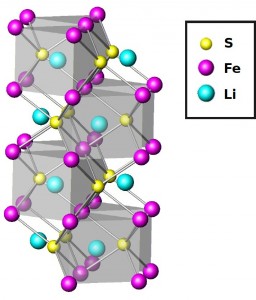
Because of their numerous advantages, rechargeable lithium-ion batteries are the most commonly used to power portable electronic devices (smartphones, tablets, laptops…). In addition, these batteries have great potential to be used in electric cars and in other applications.
Motivated by the potential application of iron sulfides (FeS) to be used as electrodes for next generation lithium-ion rechargeable batteries, Luis Craco, professor at the Institute of Physics of the Brazilian Federal University of Mato Grosso (IF-UFMT), undertook, along with his colleague, Jorge Luiz Brito de Faria, a theoretical study on the behavior of troilite (a phase of iron sulfide that is an insulator at ambient pressure and temperature) doped with lithium ions.
In the study, Craco and Faria sought to understand what happened in troilite after the electronic doping – a procedure that can transform an insulator into semiconductor or bad metal by inserting atoms (lithium ions) causing a structural reorganization of the material, by introducing electrons into it.

The work began with a series of calculations by first-principles based on the density functional theory (DFT) performed by Jorge Faria. These calculations use crystal structure data obtained experimentally. Next, Luis Craco carried out a detailed study using calculations based on dynamical mean-field theory (DMFT), to study the effect of electronic correlations between electrons in different orbitals (regions around the nucleus of an atom in which an electron has some probability of being found). In these correlations, a change experienced by an electron in an orbital causes a related change in another electron from another orbital. Correlated electrons act coordinately, although they are spatially separated. According to Luis Craco, “We should bear in mind that the theoretical description introduced in this work is entirely new in the context of troilite and its derivatives, as well as in other compounds containing iron and sulfur as constituent elements”.
In a recently published paper in the Journal of Applied Physics, the professors from UFMT reported a description of the electronic and transport properties of the doped troilite and showed that the material exhibits unconventional behavior. In fact, although the iron sulfide is an insulator even with high concentrations of lithium, their computer simulations showed the emergence of metallic states after high electron doping. Near this insulator-metal transition state, the material can be classified as a Mott insulator. Furthermore, the authors found that the metal states emerged only in certain atomic orbitals, which is the behavior of a bad metal; in other words, a different behavior from that expected from a metal within consolidated theories in Physics.
Being a bad metal, however, does not imply being banned from the overall applications. On the contrary, according to the article, the inconsistent behavior of electrons in the doped iron sulfide can be used to achieve unconventional optical and transport effects within room temperature and pressure.
“This work is a continuing effort involving many researchers in Brazil and abroad, which aims to clearly demonstrate that systems with correlated electrons represent an important class of materials for various technological applications”, said Professor Craco.
“Now we hope the scientific community, related to the physics of correlated electron systems and / or materials physics, for example, becomes aware of our study and results, and that in the near future corroborates our theoretical description of the electronic properties and unconventional transport in electron-doped troilite, thereby consolidating the relevance of our study for future applications of troilite and its derivatives in renewable energy storage or to generate new unconventional non-Fermi liquid electronic phases, with great contemporary scientific and technological appeal”, concludes Craco.
The research was funded by the Brazilian National Council for Scientific and Technological Development (CNPq).
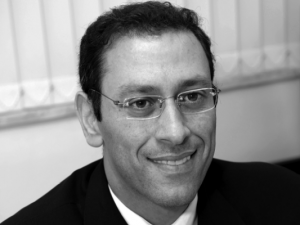 Sixteen years ago, working as a post-doctoral fellow at the Massachusetts Institute of Technology (MIT) in the group of professor Mildred Dresselhaus, the Brazilian physicist Ado Jorio de Vasconcelos headed a study that would produce the first successful result of the application of Optics, more precisely Raman spectroscopy, in the individual characterization of carbon nanotubes – keeping in mind that nanotube´s walls are just one atom thick, with diameters typically about one nanometer. In the MIT website, the page of Professor Mildred, who has been studying carbon nanostructures at MIT for more than 50 years, reinforces the importance of the work she has carried out with Jorio: 5 of the 6 publications selected by the emeritus professor are co-authored by Jorio.
Sixteen years ago, working as a post-doctoral fellow at the Massachusetts Institute of Technology (MIT) in the group of professor Mildred Dresselhaus, the Brazilian physicist Ado Jorio de Vasconcelos headed a study that would produce the first successful result of the application of Optics, more precisely Raman spectroscopy, in the individual characterization of carbon nanotubes – keeping in mind that nanotube´s walls are just one atom thick, with diameters typically about one nanometer. In the MIT website, the page of Professor Mildred, who has been studying carbon nanostructures at MIT for more than 50 years, reinforces the importance of the work she has carried out with Jorio: 5 of the 6 publications selected by the emeritus professor are co-authored by Jorio.
When Ado Jorio began his postdoc he was 28 years old and had just finished his doctorate in Physics from the Federal University of Minas Gerais (UFMG). His thesis was on phase transitions in incommensurate systems, conducted under the guidance of Professor Marcos Assunção Pimenta. Prior to that, he earned his bachelor’s degree in Physics, also from UFMG, after studying Electrical Engineering for three years.
After the postdoc at MIT, Jorio returned to UFMG and was later accepted as associate professor of the university in 2002 via a public selection procedure. From 2007 to 2009 he held a position at the Brazilian National Institute of Metrology, Quality and Technology (Inmetro) to develop nanometrology-related activities. In 2010, he became full professor of UFMG and that same year took over the direction of the Coordination of Transfer and Innovation of the University until 2012. In 2013 he was at ETH Zurich (Switzerland) as a visiting professor, carrying out teaching and research activities. In August 2016 he became Dean for Research of UFMG.
Since 2002, Jorio has expanded the subject of his post-doctoral work. He has conducted research in optics and the development of scientific instrumentation, namely the study of carbon nanostructures with various applications. An example of this diversity is a study in which Jorio participates, in which nanotechnology field techniques are used to understand details of the composition of the “Indian black earth”, a highly fertile soil with carbon sequestration potential, which is found in places formerly inhabited by Indians in the Brazilian Amazon.
Jorio holds one of the highest H-index among scientists in Brazil: 74, according to Google Scholar. He is also one of the most cited researchers in the world, evidenced by the inclusion of his name in the latest Thomson Reuters international list, which tabulated 1% of the most frequently cited papers in each knowledge area among all the indexed scientific articles between 2003 and 2013. Jorio is the author of over 180 scientific articles and 20 books or book chapters, and 8 patent applications. According to Google Scholar, his publications combine more than 30,000 citations.
His contributions have received numerous acknowledgments from prestigious institutions, such as the Somiya Award from the International Union of Materials Research Societies in 2009; the ICTP Prize of the Abdus Salam International Centre for Theoretical Physics in 2011, and the Georg Forster Research Award by the Humboldt Foundation in 2015, among many other national and international awards.
In the XV Brazil-MRS (SBPMat) Meeting, Ado Jorio will deliver a plenary lecture on a topic in which he is one of the world’s leading experts, the use of Raman spectroscopy to study carbon nanostructures. The Brazilian scientist will talk about how the technique evolved until reaching the nanoscale. He also promises to reveal some tactics that allow using light, whose wavelength is at least hundreds of nanometers, as a probe to investigate structures of only few nanometers.
See our interview with this member of the Brazilian research community in Materials and plenary speaker at our annual event.
SBPMat Newsletter: – Tell us what led you to become a scientist and work in the Materials area.
Ado Jorio: – It was a winding path! I entered university to study electrical engineering. Back then I played in a progressive rock band, so I looked for scientific research in the area of music. I was told to talk to a teacher at the physics department who enjoyed music, studied acoustics and materials. That’s how my career began and which ended up in materials science.
SBPMat Newsletter: – In your own words, what are your main contributions to the Materials area.
Ado Jorio: – I would say there are two main contributions. The first is in the area of carbon nanotubes, I have shown that optics could be brought to the level of individual nanotubes. This gave way to a very broad research field because there are various types of nanotubes, depending on their diameter and chirality. Before this work, people were studying nanotubes. After this work, people began to study specific types of nanotubes. It would be equivalent to saying that researchers studying the atom then realized that there are different types of atoms. The article that was the linchpin of this discovery was the [PRL86, 1118 (2001)]. The second contribution was the advancement of optics to study carbon nanostructures more broadly. I worked on several fronts, from scientific instrumentation for optical measurements below the diffraction limit, to the study and characterization of defects, approaching materials of interest in soil science, biotechnology and biomedicine. Some key references are the books “Raman Spectroscopy in Graphene Related Systems” and “Bioengineering Applications of Carbon Nanostructures”.
SBPMat Newsletter: – We always invite the interviewee to leave a message for the readers who are beginning their scientific careers. Many of these readers would like to one day achieve an H index like yours. What do you say to them?
Ado Jorio: – Make a big effort to attend conferences and make great presentations, always! Science is a debate and you have to be heard. Never repeat the same presentation. Each public requires a specific focus. Of course this advice depends on funding, but since the beginning of my career I have always spent my own money to fund my travels, and I still do this.
SBPMat Newsletter: – Leave a message or invitation to your plenary lecture for the readers who will participate in the XV Brazil-MRS (SBPMat) Meeting.
Ado Jorio: – After all of the above, and since the title and abstract are available, I can only offer my thanks to those who will honor me with their presence. It will be an honor to have these colleagues in the auditorium.
————————
Link to the summary of the plenary lecture of Ado Jorio: http://sbpmat.org.br/15encontro/speakers/abstracts/7.pdf
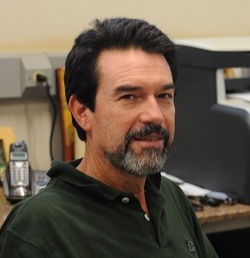
Edgar Dutra Zanotto, Professor at the Federal University of São Carlos (UFSCar), one of the founders of SBPMat and researcher in the Materials area for nearly 40 years, was chosen as a fellow of the American Ceramic Society (ACerS) – a recognition conferred annually upon few select members.
The elevation to fellow is a peer recognition by ACerS members for outstanding contributions to ceramics science or art. In fact, the fellows of ACerS are chosen from the almost 10,000 members of the society, located in 70 countries, in a nomination and election process that has the participation of members, fellows, and with the final approval of the directors of ACerS. For scientists working in academia, scientific and technological production is one of the main points considered in the election.
Professor Zanotto currently has more than 5,500 citations and an H index of 40, according to Google Scholar. Among the other positions he holds, he is director of the Center for Research, Technology and Education in Vitreous Materials (CeRTEV) and editor of the Journal of Non-Crystalline Solids.
The election of the new fellows of ACerS will be celebrated at the awards and recognition banquet of the 118th annual meeting of the society on 24 October 2016 in Salt Lake City, Utah, in the United States.
|
||||||||||||||||||||||||||||||||